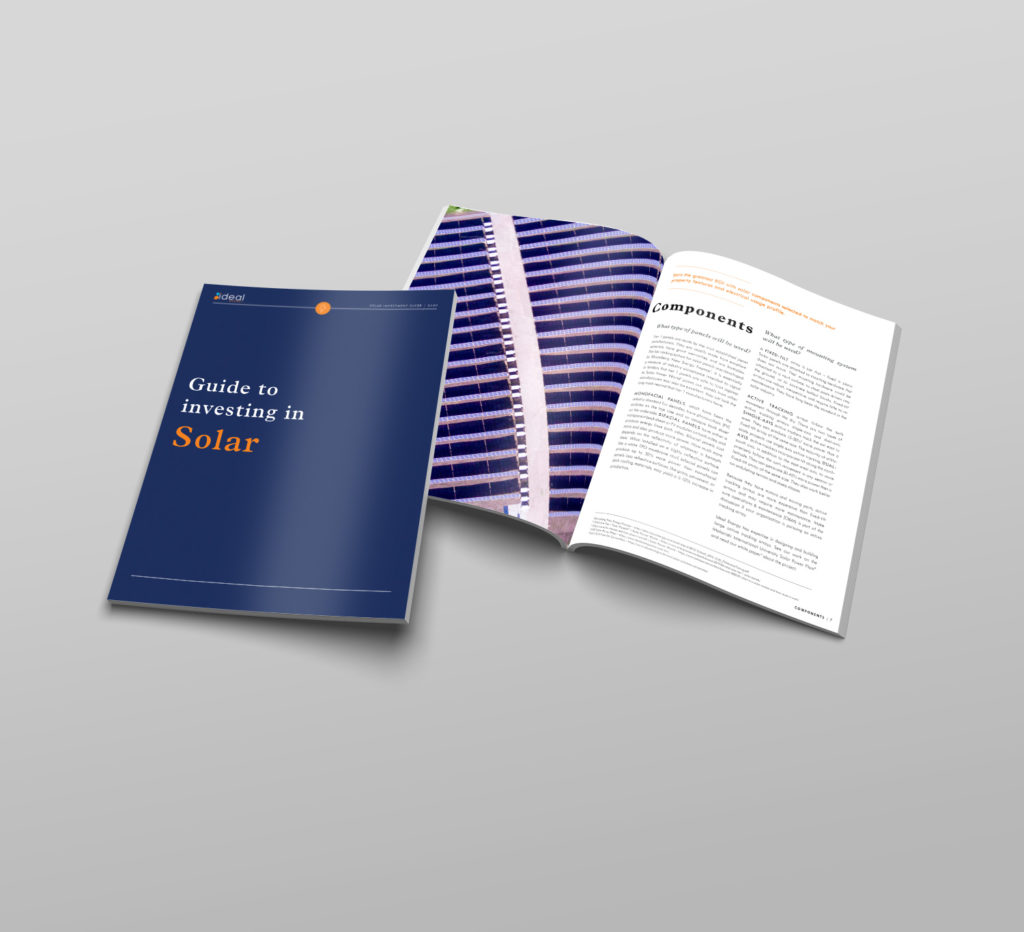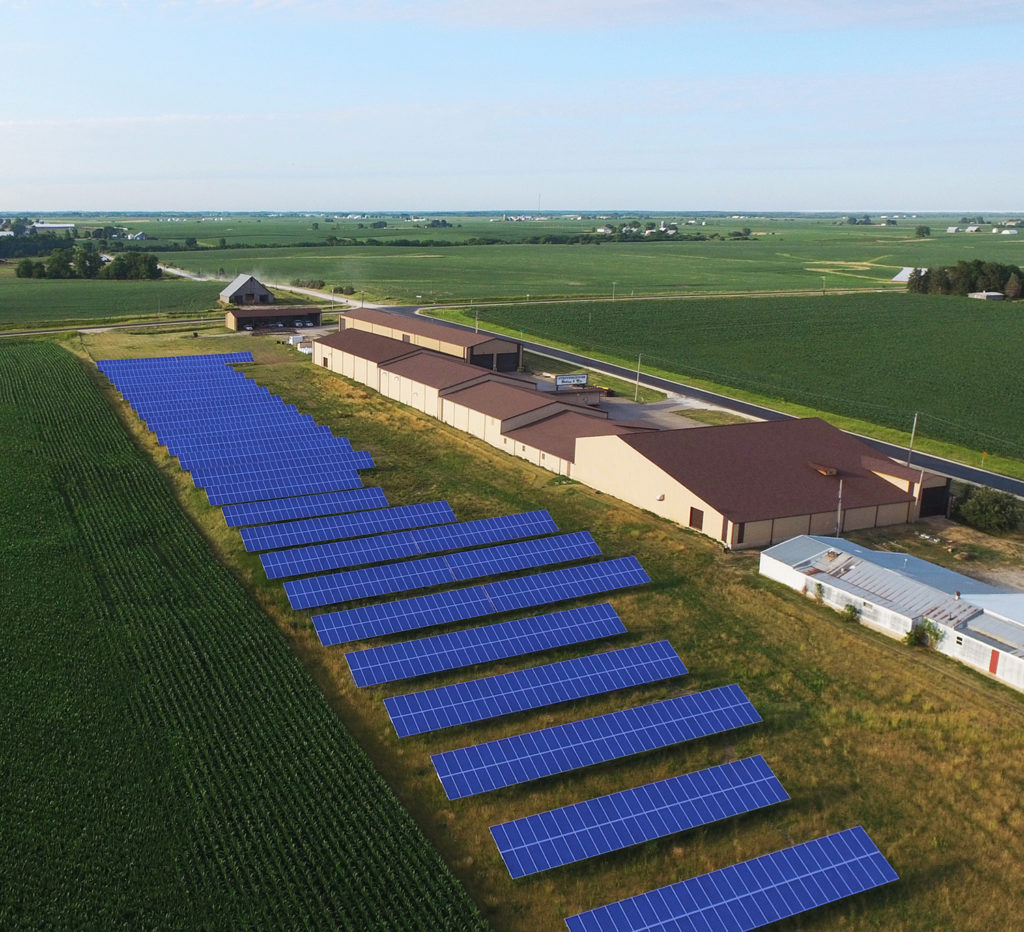Introducing ROSI: Return on Sustainability Investment
For commercial and industrial customers, the payback from a solar installation can be slightly slower than what is usually demanded from a capital investment. Two factors are often the keys to driving the decision to move forward: 1) the low risk of a solar investment, and 2) the nonmonetary benefits of solar.
In our last article we discussed the risk profile of solar, the favorable financing options available, and several of the nonmonetary benefits. In this article, we will dive deeper into the nonmonetary benefits.
Some of our customers invest in solar purely for the financial payback, but most are motivated by a combination of the payback and various nonmonetary benefits. Among the benefits we hear our customers discuss are:
- Improved supplier relations, including earning higher marks on vendor sustainability scorecards used by large OEMs and multinationals;
- Better employee relations, including higher job satisfaction, better employee retention, and the ability to attract top tier talent, who often place significant importance on corporate values;
- Brand benefits, including greater visibility and differentiation from competitors;
- Marketing opportunities, including earned media; and
- A desire to be good corporate stewards.
Most businesses view these nonmonetary benefits as somewhat intangible, but it is actually possible to assign a monetary value to most of them. In The Comprehensive Business Case for Sustainability Tensie Whelan and Carly Fink identified a number of ways in which sustainability investments benefit the bottom line, ranging from risk management to consumer demand. Whelan and Fink reported that “mounting evidence shows that sustainable companies deliver significant positive financial performance” and that the majority of studies show lower cost of capital, better operational performance, and higher stock price in sustainable companies (Whelan and Fink 2016).
“Mounting evidence shows that sustainable companies deliver significant positive financial performance.
Return on Sustainability Investment
Scholars at the NYU Stern Center for Sustainable Business have developed a framework to account for these benefits financially. This framework is called the Return on Sustainability Investment (ROSI). It allows companies to calculate the return on their past sustainability initiatives as well as to assess possible future investments.Ulrich Atz and colleagues offer a technical description of the process in their paper The Return on Sustainability Investment (ROSI): Monetizing Financial Benefits of Sustainability Actions in Companies (Atz et al. 2021, 308-9). Stern Center scholars Tensie Whelan and Elyse Douglas describe a simplified overview of calculating ROSI in their essay How to Talk to Your CFO About Sustainability published in the Harvard Business Review. Here we summarize the process in three steps:
First, sustainability initiatives have to be identified. According to Whelan and Douglas few companies actually have a comprehensive understanding of their own sustainability strategies, because those strategies tend to develop organically over time. A necessary first step, then, is to identify those efforts. When evaluating a single sustainability investment, like solar energy, this company-wide identification step can be skipped.
Next, identify possible benefits (and costs) from each sustainability initiative or investment. One initiative may have several benefits. Tally up all of the sustainability benefits identified and categorize them. Researchers have proposed nine drivers of financial performance – called mediating factors – that sustainability benefits can be grouped into. These are customer loyalty, employee relations, innovation, media coverage, operational efficiency, risk management, sales & marketing, supplier relations, and stakeholder engagement (Atz et al. 2021, 305, 308).
Materiality Matrix
Whelan and Douglas suggest that companies develop a materiality matrix during this identification step. A materiality matrix is a tool to identify and categorize sustainability-related initiatives or risks. The concept is similar to materiality in the context of financial reporting. However, within sustainability, materiality refers to “issues that can have significant repercussions on the company (both positive and negative)” with no specific monetary threshold. NYU Stern offers a short primer on materiality [PDF]. The Sustainable Accounting Standards Board offers a Materiality Map that can help organizations assess their materiality, and in turn, their sustainability efforts. The Global Reporting Initiative also has a set of sustainability reporting standards that can help companies get started.
In this step the goal is to assess the effect of the changes tallied up in the previous step. Start with measurable, nonmonetary outcomes. For example, if one of the nonmonetary benefits of a solar installation is a marketing opportunity, then the number of impressions, unique views, or retweets of solar-related media could be used to measure that benefit.
Apply financial values to these measured outcomes using the best available benchmarks or proxies if a direct valuation is not possible. Continuing with the media example above, a business could use the cost per impression of an ad buy as a proxy for the value of earned media.
Be sure to include costs, and also be careful not to double count financial benefits. Refine valuations as more data become available.
In the final step, calculate the overall net value of each sustainability initiative. For a company-wide ROSI evaluation, add up the net values of all sustainability initiatives to date.
The researchers do not prescribe a one-size-fits-all accounting method for this step. Rather they suggest that different methods might be applicable in different situations. For example, Earnings Before Interest & Taxes (EBIT) could be useful to large corporations, while Net Present Value (NPV) could be useful when monetizing future benefits (Atz et al. 2021, 309).
Not every sustainability benefit can be monetized. That’s fine. ROSI is a tool to help evaluate the net financial effect of sustainability investments – not a precise accounting system. It offers businesses more information than they had before.
Sustainability Investments Pay Back
An ever-increasing amount of empirical evidence shows that investments in sustainability initiatives have a positive impact on financial performance. In one of the most comprehensive studies to date, researchers aggregated 2,200 studies and found that 90% of them showed a positive impact from sustainability investments (Friede, Busch, & Bassen 2015).
Recent research shows average internal rates of return from 27% to 80% on low carbon investments. Revenues can increase up to 20% from corporate responsibility practices, which include sustainability initiatives (Whelan and Fink 2016).
Investors are increasingly aware of corporate sustainability efforts. In just two years, from 2014 to 2016, investor interest in nonfinancial disclosures increased from 34.8% to 59.1%. Almost 2/3 of investors are concerned about the risk of stranded assets – assets that must be abandoned due to climate or regulatory risk (ibid.).
Consumer demand is also driving sustainability investments. A stunning 82% of consumers in emerging markets and 42% in developed markets feel a “responsibility to purchase products that are good for the environment and society” (ibid.).
Employees today are motivated by “mission, purpose, and work-life balance” according to the authors. Research shows up to 55% higher morale in companies with robust sustainability programs, 38% higher employee loyalty, and 16% higher productivity. Turnover has been shown to be reduced by 25-50% in companies with strong corporate responsibility practices (ibid.).
Conclusions
Businesses increasingly find it profitable to invest in sustainability – and risky not to. Until recently, however, most businesses found it difficult to fully account for the effect of sustainability investments. Now, with ROSI, businesses have a tool to help assess nonmonetary benefits to get a fuller understanding of their investments.
References
Atz U., Van Holt T., Douglas E., Whelan T. (2021) The Return on Sustainability Investment (ROSI): Monetizing Financial Benefits of Sustainability Actions in Companies. In: Bali Swain R., Sweet S. (eds) Sustainable Consumption and Production, Volume II. Palgrave Macmillan, Cham. https://doi.org/10.1007/978-3-030-55285-5_14
Gunnar Friede, Timo Busch & Alexander Bassen. (2015) ESG and financial performance: aggregated evidence from more than 2000 empirical studies, Journal of Sustainable Finance & Investment, 5:4, 210-233, DOI: 10.1080/20430795.2015.1118917
Tensie Whelan and Carly Fink. (2016) The Comprehensive Business Case for Sustainability. Harvard Business Review. https://hbr.org/2016/10/the-comprehensive-business-case-for-sustainability
Tensie Whelan and Elyse Douglas. (2021) How to Talk to Your CFO About Sustainability. Harvard Business Review. https://hbr.org/2021/01/how-to-talk-to-your-cfo-about-sustainability








